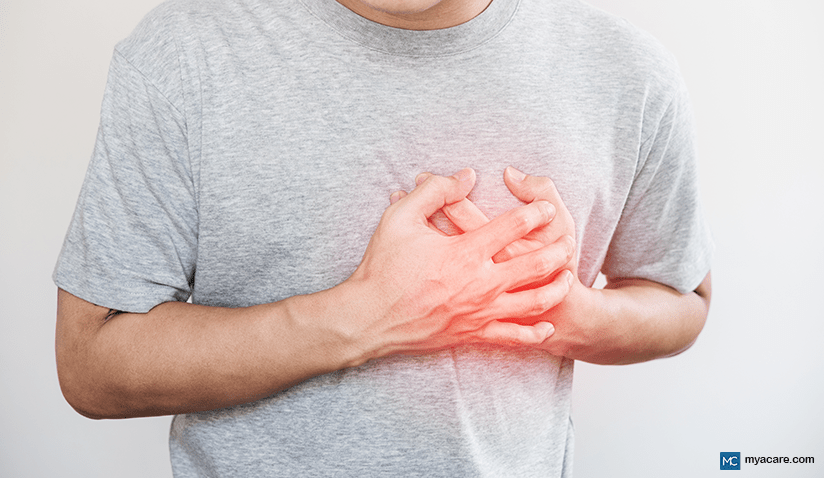EDUCATE YOURSELF, TAKE CARE OF YOURSELF THIS BREAST CANCER AWARENESS MONTH

October is Breast Cancer Awareness Month. It is a yearly campaign that intend to educate people about the importance of early screening, testing and more. This campaign starts on October 1 and ends on October 31 every year.
In this article, we will discuss breast cancer, symptoms and causes, stages of breast cancer, types of breast cancer, and diagnosis and treatment.
Breast Cancer - An Overview
Breast cancer is a form of cancer that develops in the cells of the breasts. They usually form in the lobules or ducts of the breast. The glands that produce milk are known as lobules. And, the pathways that bring the milk to the nipple are known as ducts.
Amongst all types of cancer, breast cancer is the most commonly diagnosed cancer in women globally. Although it can occur in both male and female, however, it’s far more common in women.
About Breast Cancer Awareness Month
October is observed as Breast Cancer Awareness Month in many countries across the world. This annual campaign helps increase attention and support for the awareness, early detection and treatment together with palliative care of the disease. The mission of this month is to assist those affected by breast cancer through education and other support services.
Symptoms and causes of breast cancer
In its early stages, breast cancer may not cause any symptoms. The common symptoms associated with breast cancer include:
- A lump in the breast or tissue thickening which is much different than the surrounding tissue
- Swelling in all parts of your breast
- Red skin over your entire breast
- Nipple discharge other than breast milk
- Bloody discharge from your nipple
When the cells of the breast begin to grow abnormally, it can lead to breast cancer. These cells divide more rapidly than healthy cells and they continue to accumulate at one place, thus forming a lump or a mass. It begins with cells in the milk-producing ducts or in the glandular tissue, also known as lobules. The hormonal, lifestyle and environmental factors tend to increase the risk of breast cancer.
Stages of Breast Cancer
Like all other cancers, breast cancer is also divided into stages. They are:
- Stage 0 is the earliest stage. It is undetectable by most people because there is no mass in your breast. It is detectable during a mammogram.
- Stage 1A is when the tumor is 2cm.
- Stage 1B is when the tumor is 2cm or less Stage 2 has a type a and type b.
- Stage 2A is when the tumor is bigger than a stage 1 tumor and cancer has spread. It can also be when there is no tumor, but the cancer has spread.
- Stage 2B is when the tumor is bigger than a stage 2A tumor and cancer has spread or hasn't spread, and it's just the tumor.
- Stage 3A is when the tumor is 5cm or larger, and cancer has spread.
- Stage 3B has the same size tumor or larger, and the cancer has spread to the skin of the breast. Making it inflammatory breast cancer.
- Stage 3C is when the cancer has spread to the skin of the breast and chest wall. The tumor may be any size at this stage.
- Stage 4 is the highest level and is when the cancer has spread to other parts of the body.
Types of Breast Cancer
The several types of breast cancer are divided into two main categories: “invasive” and “noninvasive”. The two categories that defines the most common types of breast cancer, include - ductal carcinoma in situ, lobular carcinoma in situ, invasive ductal carcinoma, and invasive lobular carcinoma. The other less common types of cancer are Paget disease of the nipple, Angiosarcoma, and Phyllodes tumor. All of these start in the tissue of muscle, fat, or connective tissue.
Diagnosis and Treatment
Self exam - It's a good idea to know how your breasts normally look and feel so you can notice any changes.
Breast exam is the process wherein the doctor checks both of your breast and lymph nodes in your armpit. This is done to check and feel if there are any lumps or abnormalities in it.
Two tests that are conducted to diagnose breast cancer include: Mammogram and ultrasound. A biopsy is the only definitive way to make a diagnosis of breast cancer. Other tests and procedures may be used depending on your situation.
Following are the surgeries conducted to remove breast cancer: Lumpectomy, Mastectomy, Sentinel node biopsy, Axillary lymph node dissection, and Contralateral prophylactic mastectomy. Other treatments include radiation therapy, chemotherapy, medications, and hormone therapy.
Early detection is key, so make sure to talk to your doctor if you have any concerns. If you are looking for overseas healthcare for breast cancer or any other type of cancer, please use the Mya Care Engine to research the best options for you.
Sources:
- https://www.ncbi.nlm.nih.gov/pmc/articles/PMC5482318/
- https://www.cancer.org/cancer/types/breast-cancer/understanding-a-breast-cancer-diagnosis/stages-of-breast-cancer.html
- https://www.ncbi.nlm.nih.gov/pmc/articles/PMC3255438/
- https://www.ncbi.nlm.nih.gov/pmc/articles/PMC4589089/
Disclaimer: Please note that Mya Care does not provide medical advice, diagnosis, or treatment. The information provided is not intended to replace the care or advice of a qualified health care professional. The views expressed are personal views of the author and do not necessarily reflect the opinion of Mya Care. Always consult your doctor for all diagnoses, treatments, and cures for any diseases or conditions, as well as before changing your health care regimen. Do not reproduce, copy, reformat, publish, distribute, upload, post, transmit, transfer in any manner or sell any of the materials in this blog without prior written permission from myacare.com.



